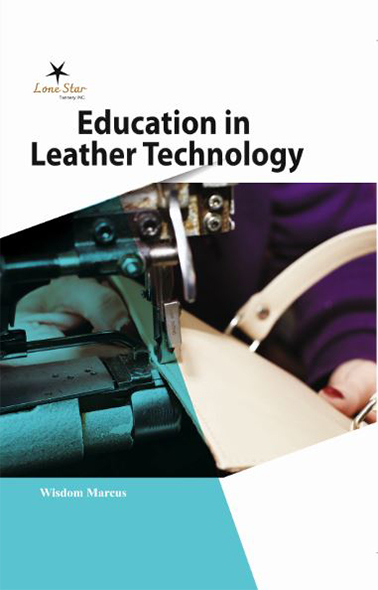
Wisdom Marcus is an Adjunct Professor at Community College, Christchurch. He is a distinguished scholar of Leather Technology from Public Research University, Adelaide. He is working with the footwear industry for almost 2 decades and his work focuses on leather training, stitching and footwear design. Marcus has authored and edited more than 20 articles, journal papers and book chapters in the field of leather. He has also served as a reviewer in several well-known journals.
"Leather is used to make a variety of articles, including footwear, automobile seats, clothing, bags, book bindings, fashion accessories, and furniture. It is produced in a wide variety of types and styles and decorated by a wide range of techniques. The earliest record of leather artifacts dates back to 2200 BCE. Leather Technology is a branch of engineering which deals with synthesis, production and refining of leather so that it can be put into efficient use. It also deals with the synthesis of artificial leather and its efficient use to make commercial goods. It is comparatively a new branch which is gaining importance in industrial sector.
This indispensable book gives a detailed insight into the leather industry, leather processing and tanning technology with manufacturing of different forms of leather products. Chapter 1 focuses on leather making. You will understand the processes of leather manufacture. It also discusses about leathers and leather products. It also describes the types of leather. Chapter 2 focuses on leather craft tools such as leather working awls, burnisher and slicker tools, leather working cleaning and conditioning tools, leather working creaser/folder tools, leather working knives and bladed tools, leather working dyes, paints, and finishes, edger and beveler tools, finishing tools and groover tools, and mauls, mallets, and hammers. Chapter 3 focuses on the use of inorganic and organic materials in leather manufacture. Chapter 4 sheds light on the theory of wet leather. It discusses on wet white leather processing: a new combination tanning system. Chapter 5 focuses on post-tanning operations. It gives an overview of post tanning. It also discusses about chrome retanning and the post tanning operations. The post-tanning stage is made up of further chemical treatments designed to improve the appearance of the leathers and make them suitable for commercial uses. After tanning, the leather still appears rigid and wet and has the color typical of the tanning process used. Chapter 6 lays emphasis on skin structure and the chemistry of collagen. In everyday life the terms hide and skin are often used synonymously, but to the tanner the term “hides” applies only to the pelts of the larger animals such as cattle, horse or buffalo, and “skins” to those of the smaller animals such as calf, goat, pig and sheep. Chapter 7 focuses on finished leather. The term finishing is applied in the leather industries to help enhance the properties and the appearance of the final piece of the leather its gives the leather more enhanced color and remove defaults that could be caused through the leather operation or a nature defect. The piece of leather is enhanced by treating it with dyestuff solutions, pigments, preparations, top coating then it enters he mechanical treatment in terms of plating.
"

© Copyright 2021, Lone Star Tannery Inc. All Rights Reserved.